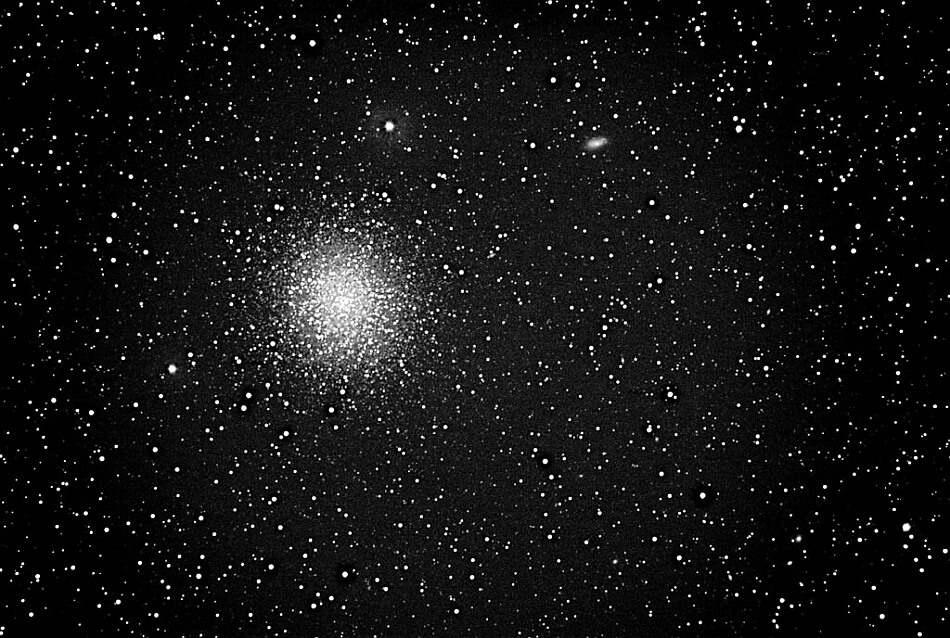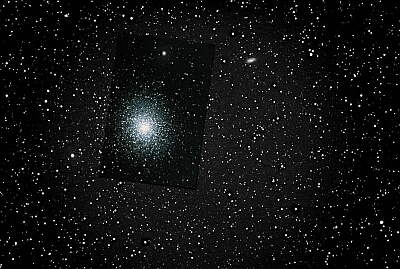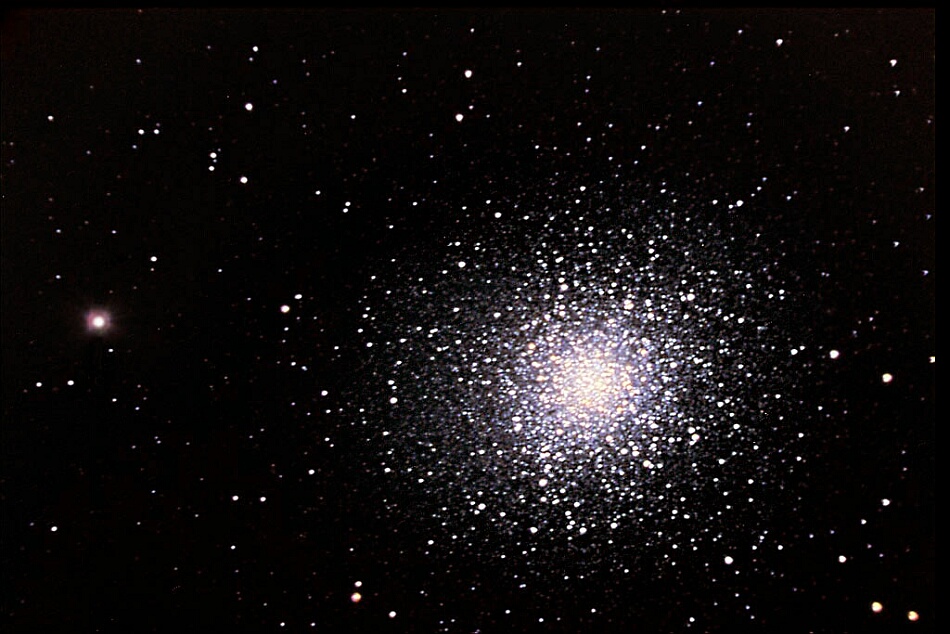| M13 - The Great Globular Cluster in Hercules |
|
| Main Astronomy Page Image Gallery Main Page Projects Page | |
|
Over 100 Globular Clusters orbit the Milky Way, and M13 is one of the largest known. It's made up of several hundred thousand stars, and on a clear night is just visible to the naked eye, and is easily seen through binoculars. The stars in these clusters are generally much older than most of the other stars in the Milky Way. These clusters are tightly bound together by gravity, and there is considerable uncertainty as to how these tightly-packed "clumps" of stars were formed, and how they came to orbit the milky way. |
|
Wide-field shot of M13. Note distant spiral galaxy NGC 6207 above and to the right of the cluster. | |
 | At left: Combination of the B/W image above with the color image below. The dark rectangle is the region shown below. Below: Color image of M13 at a higher magnification. You can make out hot, blue stars, and dimmer (but larger) reds hiding in there. These red giants are probably nearing the end of their lives. The extreme age of these stars suggests that clusters may have been some of the first structures to form during the birth of the Milky Way. |
 | |